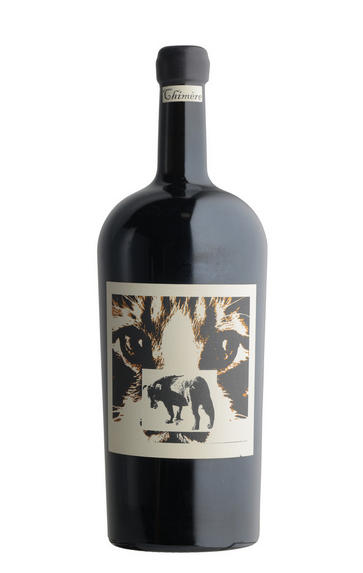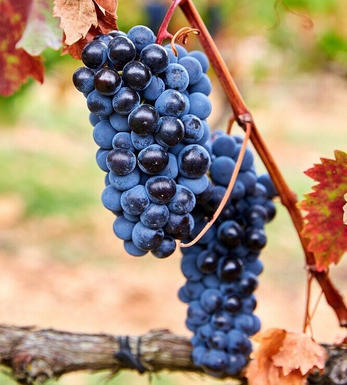
2012 Chateauneuf-du-Pape, Chimère, Rhône

Critics reviews
We finished the tasting with the inky-purple 2012 Châteauneuf du Pape. A cellar selection by Manfred Krankl (of Sine Qua Non) of mostly Mourvedre, yet with a splash of Grenache and even some white varieties, it was aged in two new 300-litre French oak barrels before being bottled (in magnum only) unfined and unfiltered. It’s a massive, masculine, structured Chateauneuf du Pape that must be tasted to be believed.
Cassis, creamy liquorice, jammy blackberry and crushed flowers are only a few of the nuances here, and it hits the palate with full-bodied richness, incredible mid-palate depth and a blockbuster finish that won’t quit. The concentration level here surpasses just about every other wine in the vintage, yet it never seems heavy, cumbersome or over-the-top. Give it 4-5 years and drink this spectacular effort over the following two decades.
Hats off to Manfred Krankl and the team at Clos Saint Jean (Pascal and Vincent Maurel, and Philippe Cambie) for this incredible effort.
Drink 2018 - 2023
Jeb Dunnuck, Wine Advocate (October 2014)
About this WINE

Chimère
Situated in the Châteauneuf-du-Pape appellation of the southern Rhône Valley, Chimère is a joint winemaking venture, bringing together several notable figures in the wine industry. These include Manfred Krankl, renowned for his role as the founder and winemaker behind Sine Qua Non, a cult producer recognized for producing uniquely distinctive wines from California’s Central Coast.
Partnered with Krankl are the Maurel brothers, Vincent and Pascal, proprietors of the Clos Saint Jean winery in Chateauneuf-du-Pape, and Philippe Cambie, a highly respected oenologist celebrated for his consulting work in the Rhone Valley. The joint venture’s primary goal is to craft a Chateauneuf-du-Pape wine that authentically captures the essence of the La Crau vineyard, one of the Rhone Valley’s most renowned terroirs, while drawing on the collective expertise of these world-renowned winemakers.
The inaugural vintage of Chimère, debuting in 2010, is predominantly crafted from the Mourvèdre grape variety, accounting for 95% of the blend. The name “Chimère,” which translates to “chimera” in French, alludes to the concept of dreams or fantasies, reflecting the aspiration of creating something extraordinary and imaginative in the realm of wine. Notably, this debut vintage consisted of only four 300-litre barrels, exclusively bottled in magnum format, resulting in a limited production of approximately 800 bottles.
This collaboration symbolizes a convergence of passion, expertise, and a shared vision to produce a wine that mirrors the terroir’s intricacies and showcases the skills of some of the most revered winemakers on a global scale.

Southern Rhône Blend
The vast majority of wines from the Southern Rhône are blends. There are 5 main black varieties, although others are used and the most famous wine of the region, Châteauneuf du Pape, can be made from as many as 13 different varieties. Grenache is the most important grape in the southern Rhône - it contributes alcohol, warmth and gentle juicy fruit and is an ideal base wine in the blend. Plantings of Syrah in the southern Rhône have risen dramatically in the last decade and it is an increasingly important component in blends. It rarely attains the heights that it does in the North but adds colour, backbone, tannins and soft ripe fruit to the blend.
The much-maligned Carignan has been on the retreat recently but is still included in many blends - the best old vines can add colour, body and spicy fruits. Cinsault is also backtracking but, if yields are restricted, can produce moderately well-coloured wines adding pleasant-light fruit to red and rosé blends. Finally, Mourvèdre, a grape from Bandol on the Mediterranean coast, has recently become an increasingly significant component of Southern Rhône blends - it often struggles to ripen fully but can add acidity, ripe spicy berry fruits and hints of tobacco to blends.


Buying options
Add to wishlist
Description
We finished the tasting with the inky-purple 2012 Châteauneuf du Pape. A cellar selection by Manfred Krankl (of Sine Qua Non) of mostly Mourvedre, yet with a splash of Grenache and even some white varieties, it was aged in two new 300-litre French oak barrels before being bottled (in magnum only) unfined and unfiltered. It’s a massive, masculine, structured Chateauneuf du Pape that must be tasted to be believed.
Cassis, creamy liquorice, jammy blackberry and crushed flowers are only a few of the nuances here, and it hits the palate with full-bodied richness, incredible mid-palate depth and a blockbuster finish that won’t quit. The concentration level here surpasses just about every other wine in the vintage, yet it never seems heavy, cumbersome or over-the-top. Give it 4-5 years and drink this spectacular effort over the following two decades.
Hats off to Manfred Krankl and the team at Clos Saint Jean (Pascal and Vincent Maurel, and Philippe Cambie) for this incredible effort.
Drink 2018 - 2023
Jeb Dunnuck, Wine Advocate (October 2014)
wine at a glance
Delivery and quality guarantee